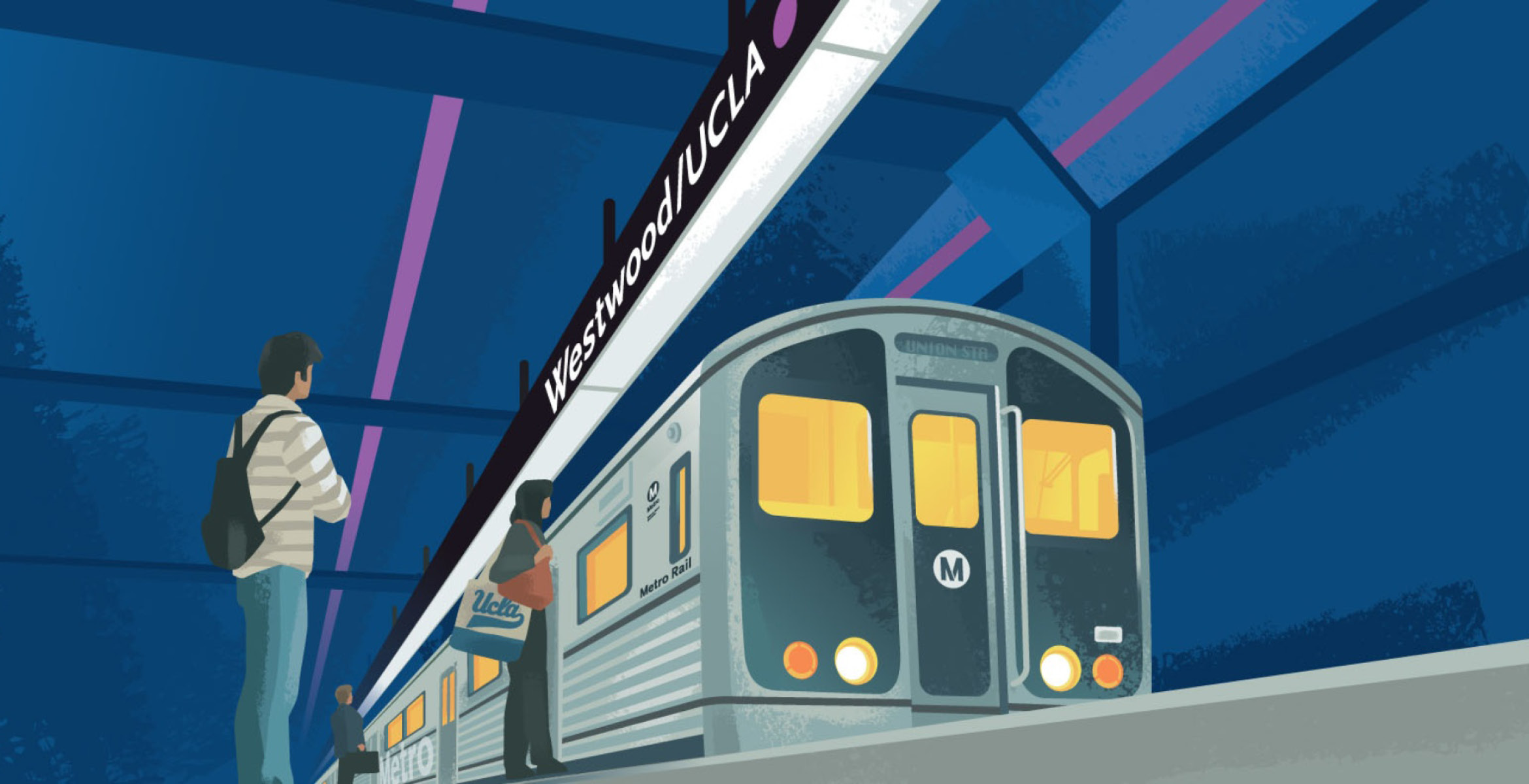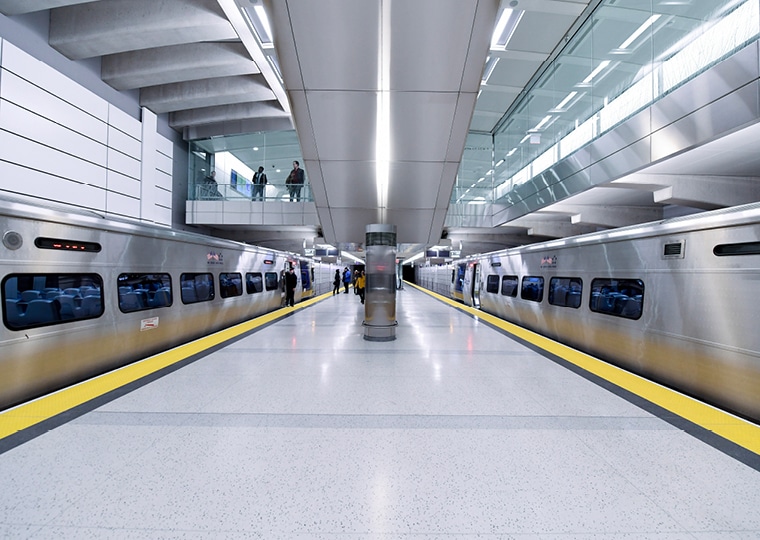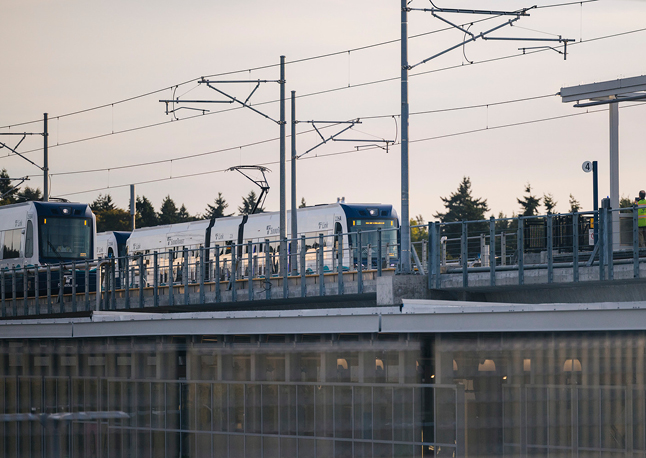
The third and final project section of the Los Angeles County Metropolitan Transportation Authority’s (Metro) Purple (D) Line Extension Project recently broke ground in Westwood and will bring new passenger transportation options to one of the nation’s most congested areas.
STV is the lead designer for both the stations and tunnels design-build contracts for Metro’s new Section 3 $3.6 billion Purple Line Extension Project. This section is the last phase of the larger, approximately $9.3 billion Purple Line Extension program.
Section 3 will run 2.56-miles between the future Century City/Constellation Station site, to a new station on the southwest corner of the UCLA campus, then west under I-405, and terminating at a new station located at the U.S. Department of Veterans Affair (VA) campus in Westwood. The stations contract is led by the Tutor Perini/O&G joint venture, and the tunnels contract is led by the Frontier-Kemper/Tutor Perini joint venture.
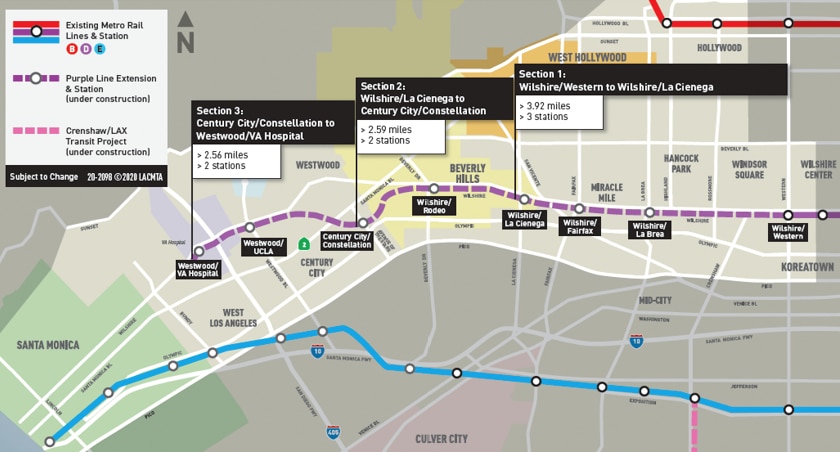
The project is a key part of Metro’s Vision 2028 Strategic Plan, which seeks to, among others, provide high-quality mobility options that enable people to spend less time traveling. This plan creates the foundation for transforming mobility in Los Angeles County though the year 2028. The project is being funded in part by the Measure M transportation sales tax measure that was approved by voters in 2016.
“The Purple Line as a whole stands to have transformative effects for Los Angeles County and its successful execution is a major priority for the Mayor and other key public officials throughout Los Angeles County and beyond,” said William Knapp, STV senior vice president and Western Region manager. “Alongside the contractor, Metro, other third-party agencies and adjacent private owners, our team is working together to help keep this project moving forward in time for the 2028 Olympics.”
In addition to Section 3, STV is currently serving as the engineer-of-record and principal design firm as part of the design-build team led by Tutor-Perini/O&G for the Purple Line Extension Project’s second section. This 2.59-mile second section connects Los Angeles’s Miracle Mile District to Century City. As part of its scope of services, STV designed the “launch box” in Century City – an excavation where two 400-foot-long tunnel boring machines (TBMs) have been lowered more than 70 feet below Constellation Boulevard.
“It’s a huge benefit to our owner, Metro, that the same design-build team is supporting both Section 2 and Section 3,” Knapp added. “It allows for continuity of service and expertise due to our familiarity with the project.”
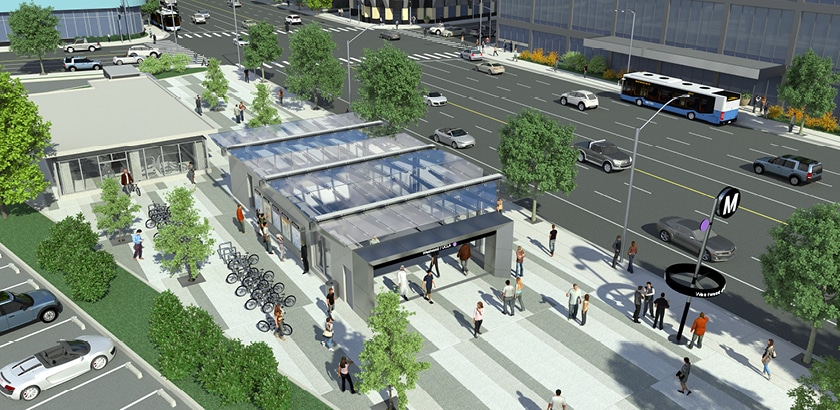
In Section 3, TBMs will be operating underneath West Los Angeles neighborhoods and heavily traveled roadways that provide access to the notoriously congested 405-Freeway. To accommodate the needs of residents and business owners, the design-build team devised a plan that would minimize disruptions and other impacts to this major traffic artery.
Additionally, the extension crosses the Santa Monica seismic fault area creating design challenges.
“To account for the increased seismic activity, the tunnel was designed so that the subway tunnels could shift as much as 6 ½ -inches to minimize disruptions to train operations,” said Girish Roy, P.E., vice president and the project manager leading the design of the Section 3 Tunnels contract. “Additionally, we designed double gasketed tunnel liners to keep out both water and gases.”
To minimize impacts to pedestrians, motorists, and businesses within the project area, the design-build team developed a temporary traffic decking system that will carry vehicular traffic over two subterranean station box cavities during construction.
“The structural design of the two new stations was performed using the seismic reactions from a full 3-D structure interaction analysis – the first time this technique was used for a LA Metro project,” said Andrew Holmquist, P.E., ENV SP, senior project manager and the design manager for the Purple Line Section 3 Extension Stations contract. “It was also critical for us to develop several distinct design packages in such a way that it would facilitate the construction of this extension as quickly as possible. The overall schedule is vitally important to this program, so design package development was truly an art form.”
Another challenge related to Section 3’s stations contract is the number of stakeholders who are impacted by the project. For example, the eastern part of the new Westwood/ VA Hospital Station is being built under right-of-way owned by Caltrans. Additionally, the new Westwood/UCLA Station is being built under Wilshire Boulevard and the station’s main entrance abuts a University of California, Los Angeles campus parking lot while its northeast and southeast entrances directly abuts private property.
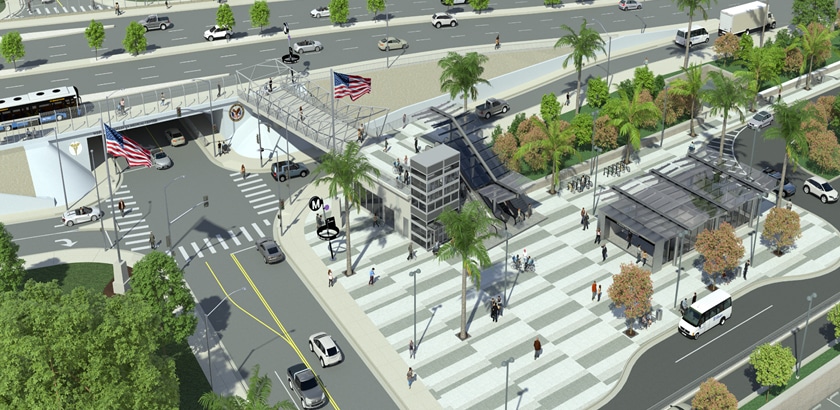
“The design-build team is working closely with Caltrans in order to mitigate any potential impacts to I-405 access,” said Tae Kuk Kim, P.E., senior project manager and project manager for the Purple Line Section 3 Extension Stations contract. “Additionally, the stations design required collaboration with the VA, UCLA, other private owners affiliated with the campus, and several departments within the City of Los Angeles and Los Angeles County.”
At the groundbreaking ceremony in the Spring 2021, local, state and federal officials were on hand to mark this major milestone and tout the long-term benefits of Section 3, and the entire Purple Line Extension project.
“The Purple Line Expansion is the key that will unlock our transportation future and open doors of opportunity across our city — and today’s groundbreaking moves us one step closer to completely redefining our relationship with public transit,” Garcetti said. “We promised Angelenos a world-class transit system when we passed Measure M, and this milestone is a clear indication of our commitment to make Los Angeles a more accessible, sustainable, and inclusive city.”
